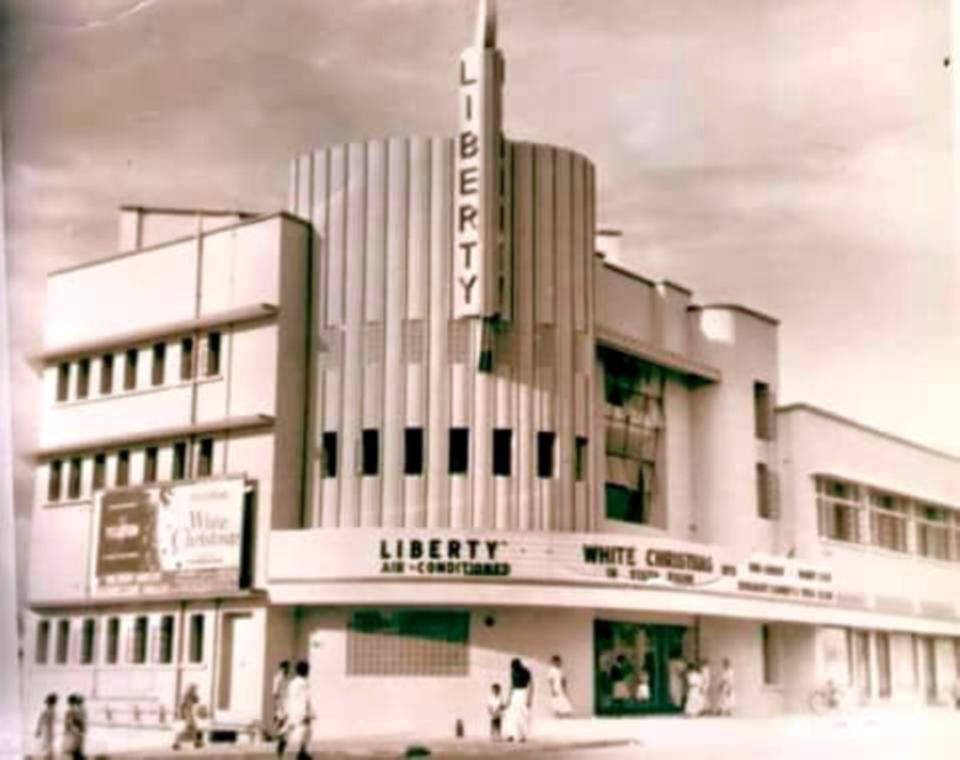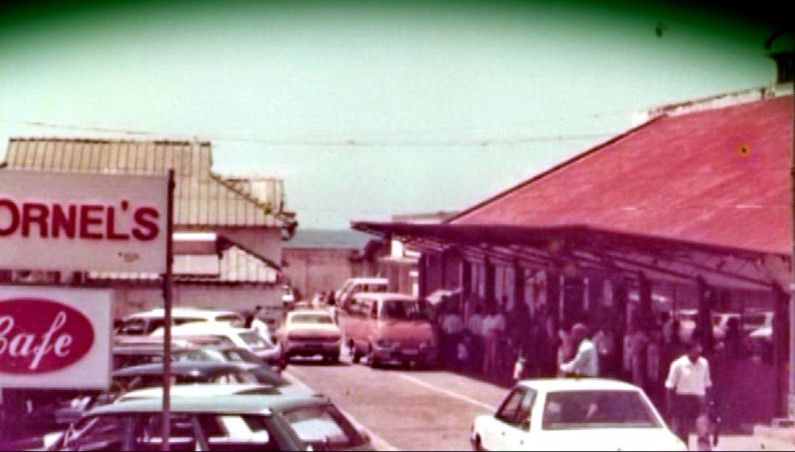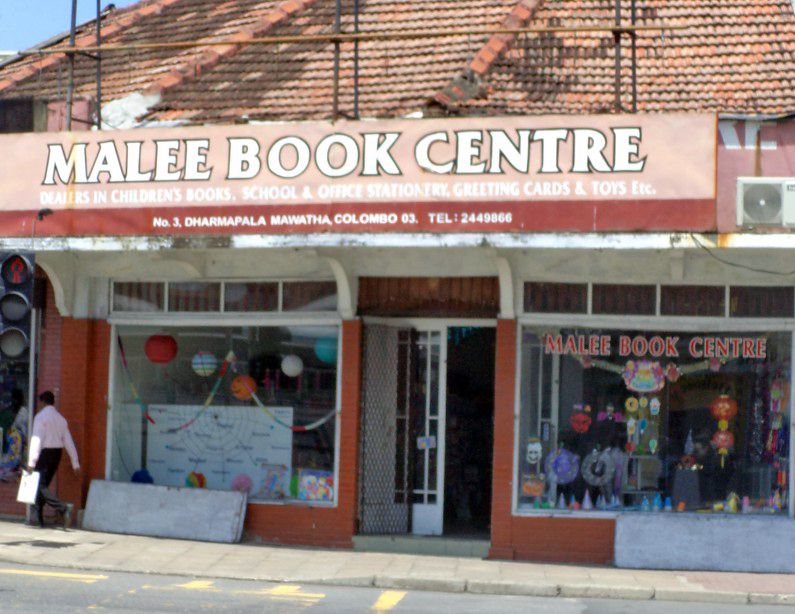Asiff Hussein 11 July 2017

Colpetty, the small yet plush ward of downtown Colombo, still has a certain charm to it. It’s a mini town of sorts, with a cinema, shopping complex, municipal supermarket, ice cream parlour, a plethora of restaurants, some choice schools, finance houses, and a variety of small businesses, hobnobbing with high-rise developments that are slowly but surely changing its skyline.
Yet, one can only wistfully recall the good old days when it had much more to offer—like Cornel’s Supermarket, the country’s first supermarket that had almost anything money could buy, Nooranis and Victoria Stores, which were General Merchants, a prodigiously large baker’s shop with a little restaurant run by Perera & Sons, and the well-stocked Malee Bookshop and Bombay Sweet House that sold all manner of confections. These are no more, but their memory remains deeply etched in the townies of the 1960s, 1970s, and 1980s, when they all thrived and throbbed with life. Those were indeed the days, as any Colpettian will tell you.
Here are the ten most popular landmarks of Colpetty’s yesteryear that are sure to take nostalgic Colpettians and others aged forty or above down memory lane:
1. Cornel’s Supermarket

Cornel’s was Sri Lanka’s first supermarket, when it took the city by storm in 1980. It was similar to the modern supermarkets mushrooming all over the country today with ample parking space in front and a big, brightly lit up building groaning with all the goodies money could buy—but back then, it was novel to Sri Lankans who had never seen the likes.
Set up by businessman Cornel Perera in collaboration with Fitzpatricks of Singapore, it was idyllically placed between Station Road and Methodist College with an entrance through Galle Road and another through Station Road. No sooner it commenced operations, vehicles cruised in and throngs of shoppers rushed in excitedly to shop amidst plush surroundings in air-conditioned comfort. Here was a welcome change from the hustle and bustle of Colpetty Market, the municipal market near the Liberty Cinema that had been built in the mid-1970s inspired by Le Corbusier’s Villa Savoye, but had lost its appeal over time. Cornel Perera recalls the days when many big-time politicians patronized the place, including JVP leader Rohana Wijeweera who, despite his espousal of socialism, had a taste for the good life and used to buy Chinese chicken imported from Singapore.
The items sold at Cornel’s were novel, different from the usual fare like MD jams and Elephant House drinks. Here were wonders from another world. There were spreads like Meadow Lee that came in colourfully illustrated plastic tubs; breakfast cereals like Weetabix, cheese wedges in different colours and flavours and even a Japanese kiddies gel toothpaste in a plastic tube adorned with colourful animals against a white background—a far cry from the simpler looking tubes of locally produced toothpaste with germ-fighting red stripes kids back then were used to polishing their enamels with.
Cornel’s later shifted to Steuart Place, Colpetty, near where the Sri Lanka Tourist Board building now stands, before branching out to other localities.
2. Perera & Sons Bakery Shop
Perera & Sons is today our neighbourhood baker with outlets all over the country. They have come a long way since Charles Perera, a cook from Kodagoda in Galle, started his bakery more than a century ago down Steuart Place, Colpetty. The bakery eventually shifted to Hyde Park Corner in Slave Island. Back then, it had only a couple of outlets, the main one along Galle Road, Colpetty, near the old Walkers’ petrol station at the turn to St. Michael’s Road.
This place was quite imposing and had roaring business until the late 1980s after which it shifted to Turret Court, Colpetty to the building occupied earlier by AD Chemists. But nothing like the good old place near Walkers. As one entered, on the left side, stood a row of glass showcases displaying their products in all their mouth-watering variety. Here were, among other things, Battenberg cakes with checked pattern of four squares in pink and green, delicately wrapped with a sweet yet firm frosting around its corners and matches, two pieces of flaky rectangular puff pastry sandwiching a generous dollop of cream and strawberry jam that were craved by the sweet-toothed, whether young or old.
Way back in the 1960s they also sold iced products. Popsicles cost 10 cents, creamsicles 20 cents, and chocsicles 25 cents. Further back stood a large table where they used to sell ice cream in silver cups that cost 25 cents. A favourite here was green mint ice cream embellished with chocolate chips, so different from the usual vanilla and chocolate flavoured ice creams available back then.
By the early 1980s, ice creams were no longer made, but further back and separated by a green mesh, stood The Melting Pot lit up by lampshades made of the labu gourd. Here were served warm fish buns with a scrumptious sauce, hot dogs and hamburgers, not to mention a refreshing iced coffee.
3. Malee Bookshop

Malee Book Centre at the turn from Dharmapala Mawatha to Galle Road was a favourite haunt of book lovers of the ’70 and ’80s. It was founded by Swarnamalee Jayasundara in 1973 on the site of Royal Salon run by her parents. Royal Salon, it is said, was patronized by foreigners in the days before independence and later by Sri Lanka’s elite. It had, in the 1960s, passed into the hands of K. W. D. and Vimala Perera, and eventually to their eldest daughter Swarnamalee, who decided it was not making enough money to raise a family on, and converted it into a bookshop.

The place specialised in English books of all descriptions, especially the famous Ladybird books that covered everything from ants to rockets. Other favourites included Enid Blyton’s storybooks for children, fictional stories for teens such as Hardy Boys and Nancy Drew, more serious genre such as James Hadley Chase, magazines such as Reader’s Digest and Eve’s Weekly and comics such as Asterix, Tintin, and Marvel comics, of which it had a very good selection. The front, with its large Pilkington windows, displayed a variety of toys including guns and little plastic apple banks.
This lovely book nook changed over time to include more stationery and party items from Jiggles of UK. It managed to survive until the early part of this year when the entire building in which it was housed, along with Bombay Sweet House and Colombo Dye Works, was demolished in May to make way for yet another development project that’s likely to change the Colpetty skyline even further.
4. Bombay Sweet House

Bombay Sweet House was a very popular confectionary business in Dharmapala Mawatha almost at the turn to Galle Road. It was set up by a family of Bohra sweet-makers of Indian origin, the Dawoodbhoys, in 1962. Here were sold delicacies of Indian origin locals were just beginning to cultivate a taste for, and some choice beverages like faluda that even up to the 1970s cost only 50 cents. Its mirrors and glass-fronted light beige cupboards along the wall, stacked with sweet boxes adorned with a colourful picture of a smiling girl and a plateful of muscats and bottles of rose syrup was an all too familiar sight until very recently when it was pulled down along with other older businesses like Malee Bookshop.
Among the dainties the store offered were boondi, which could be likened to golden beads, only that they were sweet and succulent; juicy coils of amber jalebi, and a variety of colourful muscats in red, green, and yellow. In later times, around the 1980s, it offered gulab jamoons steeped in sweet syrup. However, Bombay Sweet House was most famous for that most refreshing beverage, faluda, made of rose syrup and milk and embellished with yellow vermicelli and black kasakasa (basil) seeds.
5. Maliban Kreme House
Maliban Kreme House was a popular ice cream parlour on the seaside of Galle Road, Colpetty, opposite St Anthony’s Road. It was most famous for its large milkshakes, the best money could buy at the time. Schoolboys used to come on bikes just to enjoy a refreshing shake, which in the 1960s cost just 50 cents. A kiosk on the right sold slabs of Zellers chocolate fudge around the early 1980s, but these sadly disappeared in a couple of years, never to make a comeback as some good things do.
6. Selmars

Selmars was a very popular toy shop started by George Selliah in the early 1980s. It was someplace along Galle Road near where the present Barefoot Gallery stands. It was brightly lit and most famous for its Matchbox branded die cast vehicles that were the craze then.
7. AD Chemists
AD Chemists was situated in Turret Court in Colpetty junction and was well known for its good stock of pharmaceuticals and supplements like Pollen B and garlic capsules that then came in glass bottles adorned with a picture of an old man. Run by the Bohra family of Dawoodbhoys, it eventually ended up being managed by Asma, a daughter of the family, before ceasing operations when Perera & Sons moved in.
8. Liberty Pharmacy

Liberty Pharmacy took its name from the more famous Liberty Cinema almost next door. It was among a row of shops adjoining the cinema along with Yvonne’s Boutique where they sold ladies wear. Owned by M. S. M. Fouz, Liberty stocked much more than pharmaceuticals. In the swinging sixties, it was the go-to place for Schoolgirls’ Picture Library, a series of adventure picture story books for teenage girls. In later times, it had a rack of colourful Marvel comics the kids of the 1980s would drool over.
9. ND Jilla & Sons
ND Jilla & Sons, also known as Colombo Dye Works, was next to Bombay Sweet House. Founded by the Jilla family who were Parsis of Iranian and Indian origin, it soon earned a name for dyeing textiles. They could dye a white saree blue without anybody being able to tell the difference, as this writer’s mother discovered when she had her wedding saree dyed.
10. Indian Club
The Indian Club was started by a group of Ceylonese of Indian origin in the early twentieth century. It was along Galle Road, somewhere between the Indo Ceylon Café and Station Road. Colpetty, after all, had a large number of business people of Indian origin, like the Sindhis who ran Victory Silk Stores in Turret Court and the Parsis who ran Colombo Dye Works. It was here that Rabindranath Tagore was given a warm reception by the members of the Indian community when he visited the country.
Until the early 1980s, it had a clubhouse where members would gather on the weekends to play cards, a badminton court in front, and a tennis court behind. It also served some choice fare including a lovely egg roti done with green chillies and onions. It ceased to exist sometime around the mid-1980s or thereabouts.
This Colpetty is no more, but it’s still nice to know a few of the older players still remain, like Colpetty Municipal Market, Indo Ceylon Vegetarian Cafe, and Our Shop. For long may they thrive!
This Article was First Published on Roar Media: https://roar.media
 Asiff Hussein – Asiff Hussein Web Site
Asiff Hussein – Asiff Hussein Web Site




